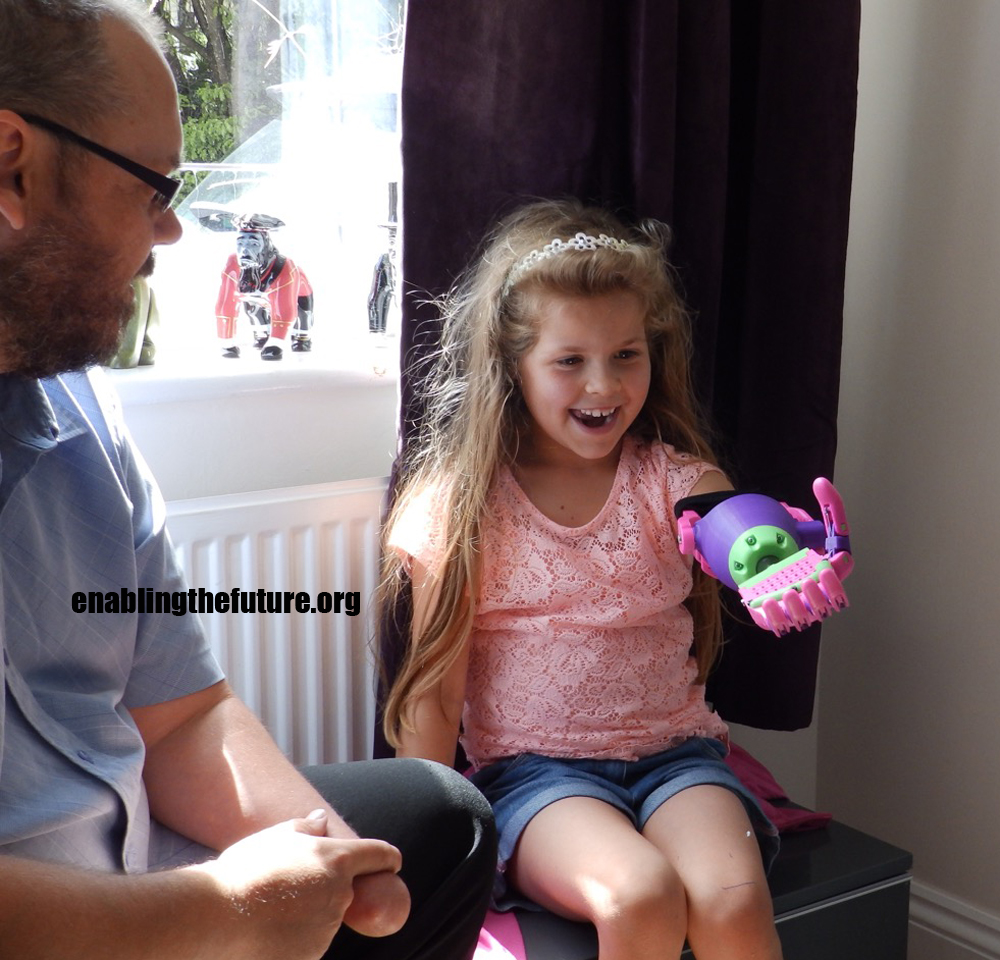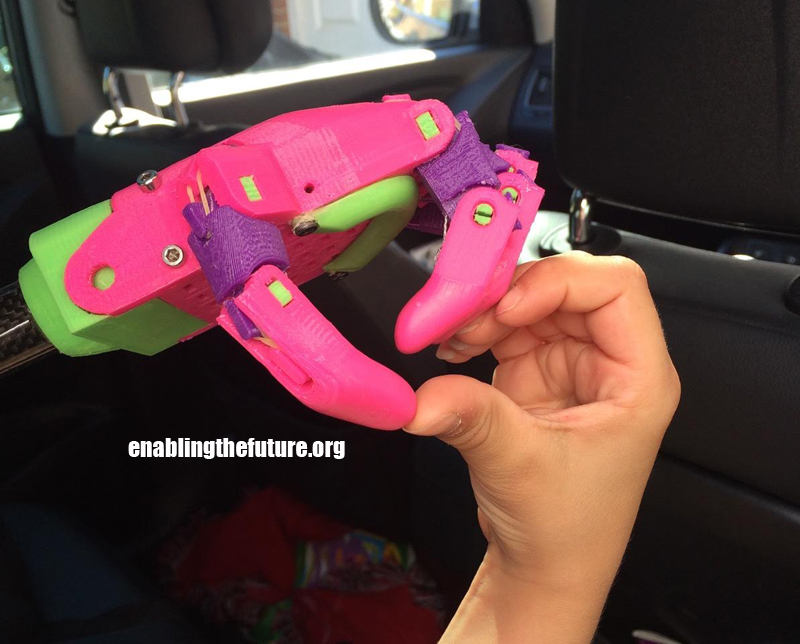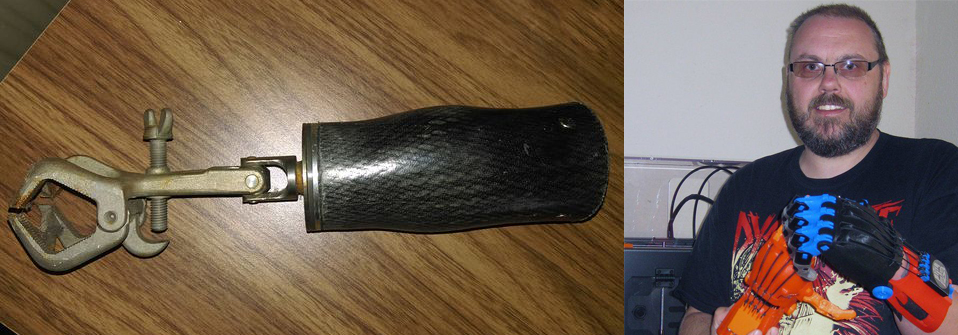Helping Hand: Prosthetic 3D Printing with Crowdsourcing
Using ready-made projects for printing prostheses is much more efficient than creating a prosthetic arm from scratch. The project Enablingthefuture.org works on the principle of crowdsourcing: it allows you to find people who will help design a prosthesis, and people who can print it on their 3D printer.
In the video - eight-year-old girl Isabella, who became the owner of the hand thanks to Enablingthefuture.org. The prosthesis was designed by Stephen Davies, who himself had previously received his hand through this project.
Parents of an eight-year-old girl found out about the e-NABLE project on Facebook . They watched the video on the page and read the stories until they asked Isabella a question: did she want to try such a device? The girl agreed. The project has combined it with developer volunteer Stephen Davis. Stephen came to Bristol, UK, to personally hand over a new hand to the girl.
')
Isabella has become one of the beta testers who will help develop more durable and comfortable hand prostheses for other recipients. Management became one of the difficulties: Isabella has to use muscles that she had not previously used. Now she is experimenting, trying to grab different objects, is studying what she can and cannot do with them.
The girl's father was worried that Isabella would be embarrassed by the prosthesis. But the girl was glad to go with a multi-colored hand to the store and walked with her, she wanted to show the prosthesis to the whole world, constantly telling how this hand works.



Stephen Davis is forty years old. He knows what it is like to live without a hand, and how to live with an uncomfortable prosthesis. He was born without a left hand. The National Health Service handed him a prosthesis, which "can be described as a hook from the Middle Ages." The e-NABLE project helped Stephen find a developer Drew Murray. After receiving his first hand, Stephen in a few months raised money to buy a 3D printer and became a volunteer.
Stephen considers himself a unique person: he develops and prints dentures that he can test on himself.

In the video - eight-year-old girl Isabella, who became the owner of the hand thanks to Enablingthefuture.org. The prosthesis was designed by Stephen Davies, who himself had previously received his hand through this project.
Parents of an eight-year-old girl found out about the e-NABLE project on Facebook . They watched the video on the page and read the stories until they asked Isabella a question: did she want to try such a device? The girl agreed. The project has combined it with developer volunteer Stephen Davis. Stephen came to Bristol, UK, to personally hand over a new hand to the girl.
')
Isabella has become one of the beta testers who will help develop more durable and comfortable hand prostheses for other recipients. Management became one of the difficulties: Isabella has to use muscles that she had not previously used. Now she is experimenting, trying to grab different objects, is studying what she can and cannot do with them.
The girl's father was worried that Isabella would be embarrassed by the prosthesis. But the girl was glad to go with a multi-colored hand to the store and walked with her, she wanted to show the prosthesis to the whole world, constantly telling how this hand works.
She is magical and I really like the colors! I will use it as much as I can! Isabel



Stephen Davis is forty years old. He knows what it is like to live without a hand, and how to live with an uncomfortable prosthesis. He was born without a left hand. The National Health Service handed him a prosthesis, which "can be described as a hook from the Middle Ages." The e-NABLE project helped Stephen find a developer Drew Murray. After receiving his first hand, Stephen in a few months raised money to buy a 3D printer and became a volunteer.
Stephen considers himself a unique person: he develops and prints dentures that he can test on himself.

Source: https://habr.com/ru/post/365961/
All Articles